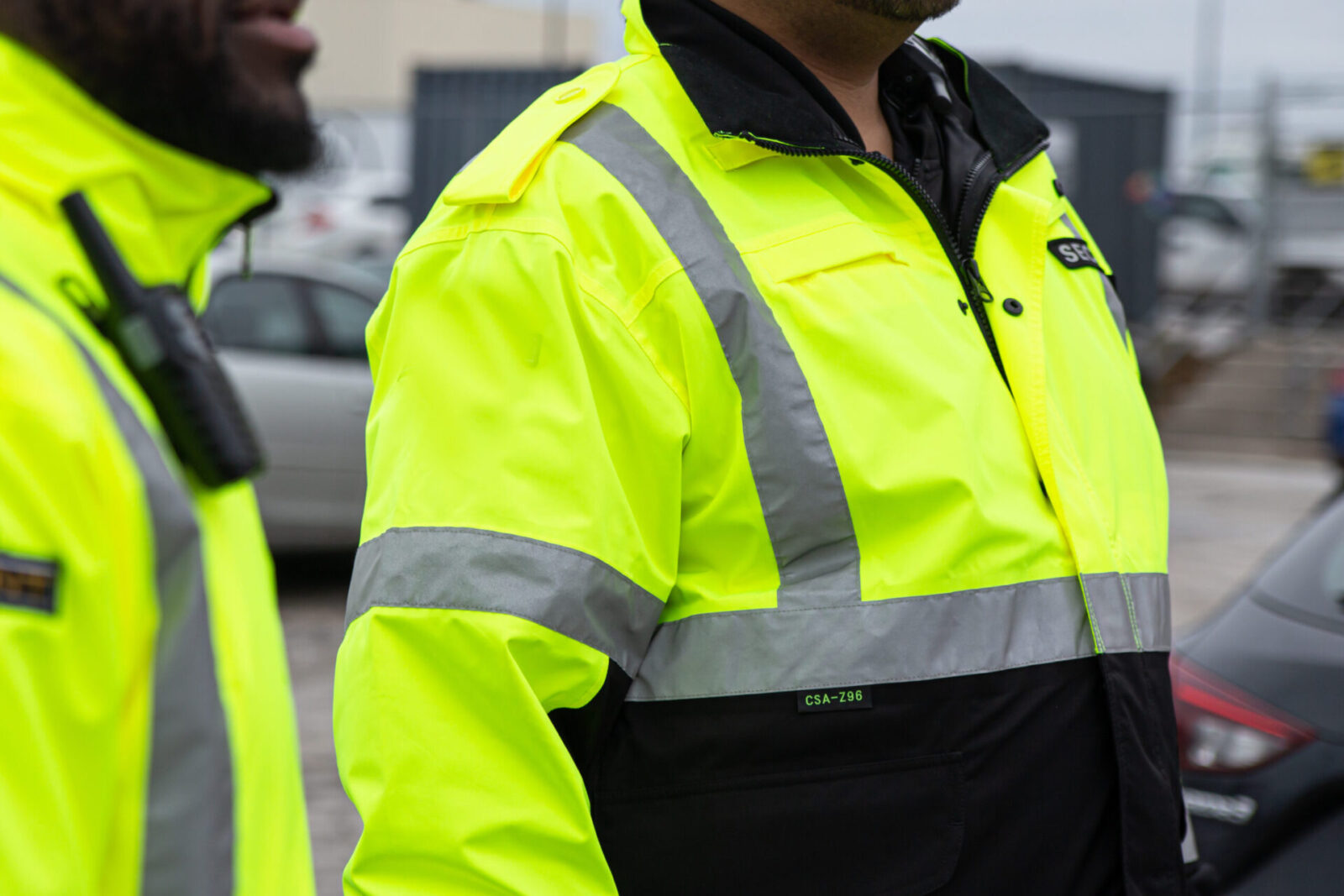
Essential PPE in the Food Industry: What You Need to Know
Overwhelmed by PPE options for food safety? Master your PPE selection for food workers safety with these practical tips.

Get 20€ off on your first order!
Choosing the right Hi-vis jacket is key to ensuring safety and comfort in low-visibility environments.
This guide will help you understand the important factors to consider—visibility standards, materials, fit, and additional features. By the end, you’ll be confident in selecting the perfect jacket for your needs.
We’ll also introduce top European suppliers with a variety of options to suit different industries.
Plus, we’ll provide solutions for all your future safety gear needs, from Hi-vis shirts to pants. Explore Hi-Vis Jackets
Hi-vis jackets, also known as reflective jackets, serve a dual purpose: ensuring wearer visibility and providing basic protection against weather and work issues.
These jackets are crucial in industries like construction, logistics, and manufacturing, where workers often operate in environments with moving vehicles or machinery.
By enhancing visibility, these jackets improve workplace safety by enhancing visibility, particularly in environments with reduced visibility or challenging weather.
To further understand the importance, consider environments like transportation hubs where visibility may be reduced by fog or rain. Here, reflective jackets are key to improving visibility and supporting workplace safety.
When selecting a Hi-vis jacket, you should prioritize features that align with your specific work environment and safety requirements.
Ensure the jacket meets European visibility standards, such as EN ISO 20471. This standard ensures high visibility through reflective and fluorescent materials tailored for European safety conditions.
Compared to standards like ANSI/ISEA 107 in the United States, EN ISO 20471 places a stronger emphasis on full-body reflectivity and is specifically designed for diverse European climates and work environments, ensuring comprehensive safety compliance.
Choose a jacket made of durable materials like polyester or a blend suited to withstand tough working conditions. For outdoor work, jackets with weatherproofing or thermal insulation are ideal.
Comfortable jackets with proper sizing ensure ease of movement. Consult the size chart provided by top suppliers like Portwest or Helly Hansen for accurate fitting.
Look for functional features like:
Different types of Hi-vis jackets cater to various needs. Here’s a breakdown:
| Jacket Type | Key Features | Ideal Use Cases |
| Standard Reflective Jackets | Basic visibility, lightweight | General work environments |
| Weatherproof Hi-Vis Jackets | Waterproof, windproof, durable | Outdoor work in challenging weather conditions |
| Thermal Hi-Vis Jackets | Insulated, provides warmth | Cold environments like warehouses or outdoor construction |
A chart summarizing these types could provide quick comparisons for readers, highlighting features like insulation, waterproofing, and weight.
Evaluate the lighting, weather, and hazards in your workplace. Use this checklist to guide your evaluation:
For environments with increased safety requirements, jackets with enhanced reflective coverage are ideal, such as those from Dimex or Nitras. Use garments with extended reflective surfaces for areas with frequent vehicular movement.
For transportation and logistics, lightweight and breathable jackets may be more practical. Warehousing workers might prioritize thermal options for cold indoor conditions. Highlighting examples like “warehouse employees working in cold storage areas” can contextualize these recommendations.
| Supplier | Key Features | Catalog Link |
| Dimex | Durable and weather-resistant | View Catalog |
| Faba | Lightweight and versatile | View Catalog |
| Helly Hansen | Premium quality and innovation | View Catalog |
| Portwest | Wide range and affordability | View Catalog |
| Fristads | Industry-specific designs | View Catalog |
Pairing your Hi-vis jacket with complementary items ensures complete safety and comfort. For example, workers in construction zones often use Hi-vis pants to achieve full-body visibility, while those in rainy outdoor environments benefit from pairing their jackets with waterproof overalls.
Similarly, logistics professionals working in warehouses may combine cut-resistant gloves with their jackets to protect their hands during heavy lifting or handling sharp objects. Consider these options:
For specific work conditions, like heavy rain, pairing waterproof Hi-vis jackets with water-resistant overalls can be particularly beneficial.
For further reading, explore these related guides:
We hope this guide has been helpful in navigating the essential factors for choosing the best Hi-vis jacket, from visibility standards to material durability. Whether you’re working in construction, transportation, or warehousing, we’re here to support your safety needs.
Explore the full range of Hi-vis jackets on Droppe, where trusted brands like Portwest, Helly Hansen, and Dimex are just a click away.
Have questions or need advice on finding the perfect jacket? Don’t hesitate to reach out—we’re always here to help ensure your safety and confidence in every purchase.
– The Droppe Team
EN ISO 20471 is the European standard for Hi-vis clothing, ensuring optimal visibility with specific fluorescent and reflective materials.
Not all Hi-vis jackets are waterproof. Look for jackets labeled as weatherproof or rain-resistant for added protection.
Yes, most Hi-vis jackets are designed to fit comfortably over regular workwear for added visibility.
The lifespan of a Hi-vis jacket depends on usage and care, but high-quality jackets can last for several years with proper maintenance.
Yes, there are thermal Hi-vis jackets designed for cold environments, offering both warmth and visibility.
Thank you! You've signed up for our newsletter.



















Overwhelmed by PPE options for food safety? Master your PPE selection for food workers safety with these practical tips.

Struggling to maintain clear vision in demanding environments? This guide is here to help. By the end, you’ll know exactly...

Electricians across Europe face unique challenges that require reliable safety glasses to ensure both protection and efficiency. Whether safeguarding against...

Overwhelmed by PPE options for food safety? Master your PPE selection for food workers safety with these practical tips.

Struggling to maintain clear vision in demanding environments? This guide is here to help. By the end, you’ll know exactly...

Electricians across Europe face unique challenges that require reliable safety glasses to ensure both protection and efficiency. Whether safeguarding against...
Get 20€ off on your first order!
Save 30% by buying directly from brands, and get an extra 10€ off orders over €100
Save 30% by buying directly form brands, and get an extra 10€ off orders over €100